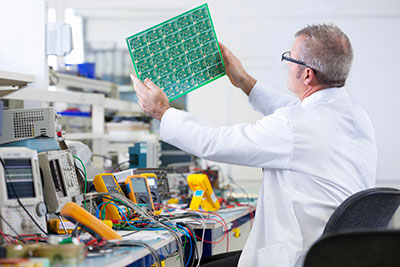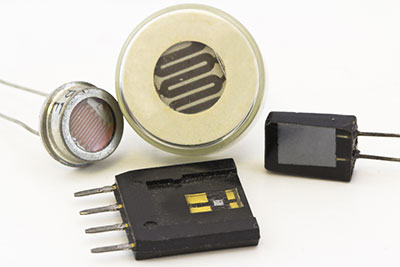Do you like to create interactive and embedded systems?
FPGA and microcontrollers are two of the most popular items used by electrical engineers or hobbyists. Both can be programmed to perform certain functions.
The possibilities are endless if you know the basics; we will look at them below. However, before we start, do you know their differences?
Knowing the differences between FPGAs, microprocessors, and microcontrollers to choose the correct one for your project.
We have prepared an in-depth guide focusing on the differences between various components so your project can succeed and become efficient.
Contents
- FPGA
- What is FPGA?
- FPGA Architecture
- FPGA Programming
- FPGA Board
- FPGA Tutorial
- Microcontroller
- PIC Microcontroller
- Microcontroller Architecture
- Microcontroller Programming
- Microprocessor Vs. Microcontroller
- Difference between Microprocessor and Microcontroller
- FPGA Vs. Microcontroller
- FPGA Vs. Microcontroller--Difference between FPGA and Microcontrollers
- FPGA Vs. Microcontroller Power Consumption
- FPGAs vs Microcontroller: Choosing Between FPGAs and Microcontrollers
- Application
- Customization
- Expertise
- Cost
- FPGA Vs Microcontroller--Conclusion
FPGA
What is FPGA?
FPGA is short for Field-Programmable Gate Array and is a type of integrated circuit. An engineer or designer can program it after manufacturing to carry out various tasks.
FPGAs come with many programmable logic blocks and interconnect frameworks that can be reconfigured and rewired. The logic gates can be inter-wired using different configurations, which allow them to be wired together.
You can perform complex combinational functions by configuring the logic blocks and secure logic gates such as XOR and AND.
You will also find memory components in an FPGA, including complete memory blocks and simple flip-flops.
FPGAs are found in automobiles, data centers, medical equipment, image and video processing tools, wired communications, etc.
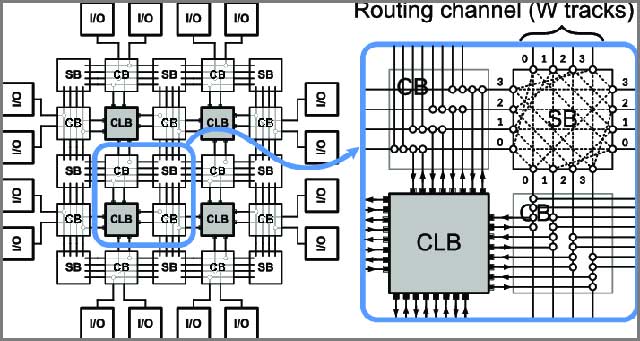 Image 1: FPGA Vs. Microcontroller
Image 1: FPGA Vs. Microcontroller
FPGA Architecture
Logic Blocks
Also known as logic array blocks or configurable logic blocks, these components are the core of the FPGA because they handle the logical operations.
They contain lookup tables to handle the logical operations and flip-flop circuits to store the lookup table’s result.
Interconnects
Programmable interconnects form a fabric between the logic blocks and take up most of the chip’s space (about 90%).
Instead of only wires, the interconnect component also consists of programmable switches, which you can configure to handle different digital functions.

A graphical representation of an FPGA chip on a board
I/O Blocks
I/O blocks are programmable data ports that send out or bring in data to the chip, including general-purpose input/output pins to link to external circuits.
FPGA Programming
FPGA programming configures or reconfigures the IC using Hardware Descriptive Languages such as VHDL and Verilog.
FPGAs can perform specific functions through programming by connecting the logic blocks and interconnects.
FPGA Programming Language
Programming language for FPGA-called hardware
Description Language, as it is meant for designing or describing hardware. The two languages commonly used to program FPGAs include VHDL and Verilog HDL.
VHDL
The US Department of Defense developed VHDL, a VHSIC (Very High-Speed Integrated Circuits) language. The Department researched the language during the 1980s to create high-speed circuits.
It was adopted as the IEEE Standard 1076 in the year 1987.
It is widely used to design analog mixed and digital signal circuits.
Verilog HDL
Huang, P. Goel, and P. Moorby conducted simulation and model gates in 1984 for a logic simulator. D. Warmke, C.-L, created the language.
Cadence took over the project in 1990 and acquired IEEE Standard 1364 in 1995.
It validates and designs digital circuits and analog or mixed-signal circuits.
FPGA Board
FPGAs are integrated circuits meant to carry out specific tasks. You can purchase FPGAs as a standalone product or for FPGA boards for emulation and development purposes.
FPGA boards make your job easy and don't require you to purchase additional peripheral devices.
The panels have some forms of external storage and come with RAM and ROM for performing tasks. You may also find switches, LEDs, pin expansion headers, flip-flops, and necessary I/O ports.
It can be a cost-effective option to buy an FPGA board rather than invest in separate pieces of hardware.
FPGA Tutorial
It would help if you understood digital logic design and were familiar with logic gates and sequential and combinational logic circuits.
Then, you can learn the Verilog or VHDL programming language to configure your FPGAs.
If you want help, many online videos can be used to get step-by-step instructions.
Many guides and tutorials are available on the internet to learn FPGA programming.
Now, we will look at microcontrollers in our next chapter.
Microcontroller
Microcontrollers are like computers with RAM, ROM, I/O ports, and other peripheral devices to perform specific tasks.
You can find different microcontrollers such as Arduino microcontrollers and Pic Microcontrollers.
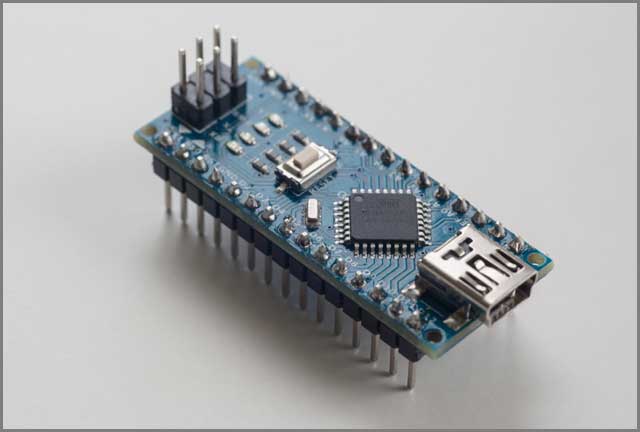 Image 2: FPGA Vs. Microcontroller
Image 2: FPGA Vs. Microcontroller
PIC Microcontroller
Microchip Technology produces PIC microcontrollers based on the PIC1650 developed by General Instrument. The earlier versions came out in 1976, and the company sold more than twelve billion kits by 2013.
The microcontrollers can be reprogrammed and utilize flash memory for storage. The microcontrollers come in different models, and modern ones use powerful chips with instructions for digital signal processing.
You can purchase them in pin combinations ranging from 6 to 144 pin chips.
It also includes communication ports, USB, I/O pins, and ADC and DAC modules. You can use the company-provided software to program the microcontrollers.
Microcontroller Architecture
Unlike FPGAs, microcontrollers are not programmable after manufacturing because they have fixed instructions for the CPU (hardware). Therefore, their architecture is different and consists of these parts.
CPU
The central processing unit is the microcontroller’s brain because it executes the instructions and data stored in memory. Additionally, it controls the operations of the peripheral devices.
Memory
A microcontroller’s memory stores data and instructions (code) to run the specific functions accorded to the CPU. But it doesn’t store the two in the same space. There’s the data memory (volatile SRAM) and program memory (non-volatile flash memory).
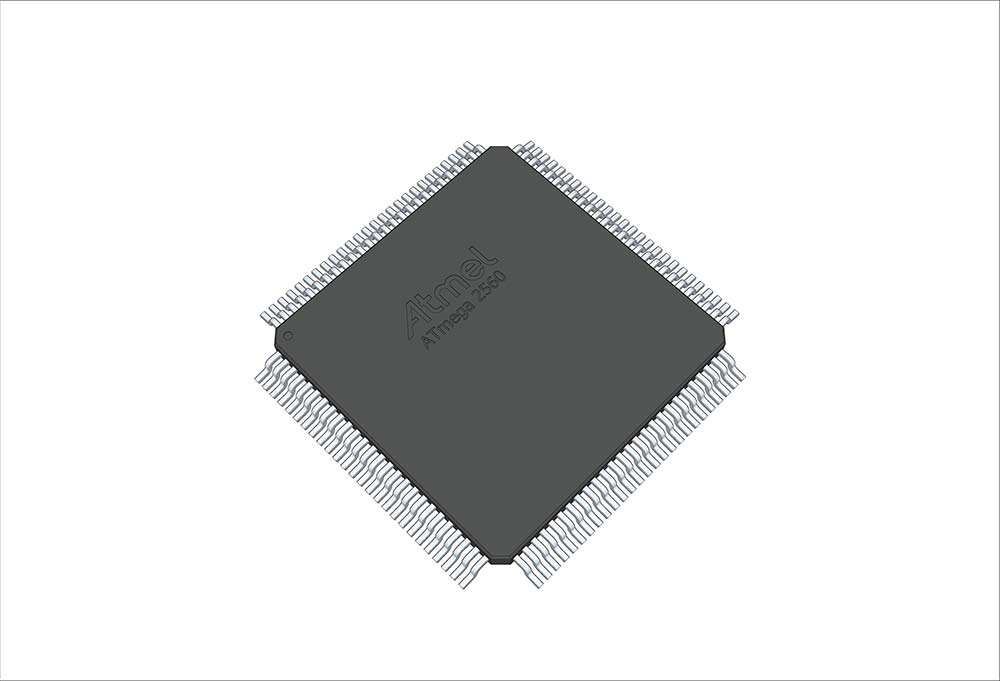
An ATMega 2560 8-bit microcontroller
Peripherals
Peripheral devices are the additional devices connected to the CPU and integrated into the microcontroller. These include timers, PWM generators, ADCs, etc.
Microcontroller Programming
Microcontrollers can be programmed using a variety of assembly languages. Many high-level programming languages, such as JavaScript, Python, and C, are currently used.
Some languages have been designed based on purpose, while others are general programming languages like C.
The general-purpose languages may have some restrictions and features to support a microcontroller's unique capabilities.
Manufacturers also release a programming environment for the users to aid in its development.
The next chapter will examine the differences between microprocessors and microcontrollers. FPGA Vs. Microcontroller
Special Offer: Get $100 off your order!
Email [email protected] to get started!
Microprocessor Vs. Microcontroller
Many people use microprocessors and microcontrollers interchangeably, but they are completely different. You can find similarities between them; both are designed for real-time activities.
Microprocessors and microcontrollers cannot be differentiated just by the visual survey, and both are types of IC. Based on the purpose and features, you can find different versions in the market ranging from 6 pins to up to 100 pins.
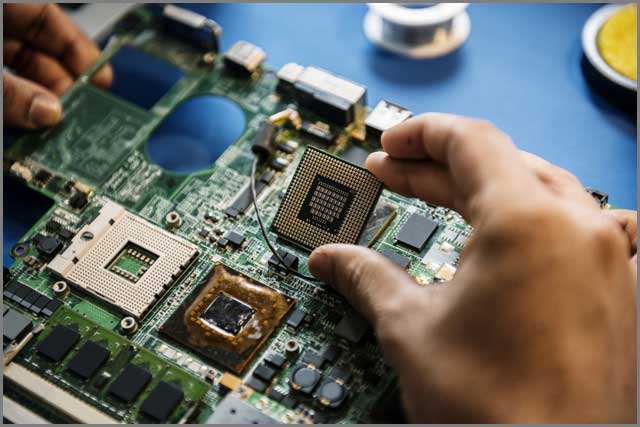 Image 3:FPGA Vs. Microcontroller
Image 3:FPGA Vs. Microcontroller
Difference between Microprocessor and Microcontroller
Microprocessors are ICs that come with a computer or CPU inside and are equipped with processing power. Examples include Pentium 3, 4, i5, Core Two Duos, and others in computers.
You will not find peripherals such as RAM or ROM on the chip. The designer provides the peripherals out of the chip to achieve functionality.
The microcontroller is a computer with RAM, ROM, timers, I/O ports, and other peripherals. For this reason, they are also known as computers on a single chip or mini-computer. Many microcontrollers are available today with various features in different versions.
Microprocessors are bulky due to the external peripherals, whereas microcontrollers are smaller. Microprocessors form the heart of a computing system, while microcontrollers drive embedded systems.
Microcontrollers are engineered to carry out specific tasks where the input and output have been defined. Some processing is carried out based on the nature of the application, and work is generated.
The specificity of the tasks requires significantly less usage of I/O ports, RAM, and ROM and can be made to accommodate a single chip.
FPGA Vs. Microcontroller
The advantages include reduced costs and can be found in remote controls, mobiles, keyboards, pen drives, digital cameras, etc.
You don't use microprocessors for specific tasks but for multi-facet tasks such as developing games, software, websites, and video editing. The relationship between input and output is not defined in this case.
Microprocessors are meant to handle complex tasks and achieve clock speeds much higher than microcontrollers.
Modern microprocessors can go beyond 1 GHz, while microcontrollers achieve a maximum of 30 to 50 MHz.
Another difference is related to cost. You can buy a microcontroller at a much lower price than a microprocessor.
However, using a microcontroller instead of a microprocessor is unsuitable, while using a microprocessor in place of a microcontroller makes the application costly.
The cost is also less because microcontrollers are set up using CMOS technology. Microprocessors require multiple external components to function and become expensive in the end.
Microcontrollers have a power-saving system, while microprocessors lack such a feature.
Microprocessors also consume less power than microprocessors as they do not need contributions from external components.
Harvard architecture is used to design a microcontroller with specific information memory and programming.
Microprocessors are designed with a von Neumann architecture, where memory is transferred to an equivalent memory module.
Microprocessors do not need as many registers as microcontrollers. The former have memory-based operations, and the latter make programs more accessible to write.
We have covered the differences between microprocessors and microcontrollers, and you should clearly understand both by now.
Now, we will explore the differences between FPGA and microcontrollers.
FPGA Vs. Microcontroller
Microcontrollers and FPGAs are the two most essential tools hobbyists and electrical engineers use. It is necessary to go through a discussion of FPGA vs. microcontroller to distinguish between the two.
However, first, we will look at the similarities, too! Both components are meant to monitor output values and the effect based on the output value in a broader sense.
Using an FPGA, you can create a microcontroller architecture, but the reverse is impossible.
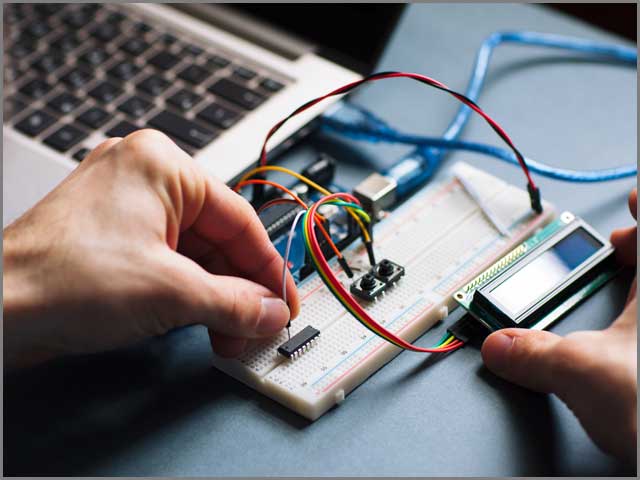 Image 4: FPGA Vs. Microcontroller
Image 4: FPGA Vs. Microcontroller
FPGA Vs. Microcontroller--Difference between FPGA and Microcontrollers
Almost every computing device has an embedded microcontroller for tasks and interactions. It can be programmed to carry out simple tasks on behalf of other hardware.
You can compare the structure of a microcontroller with that of a computer, which has all the necessary peripherals such as memory, input-output ports, and timers.
FPGA is an integrated circuit with millions of logic gates and can be made to carry out tasks by programming the logic gates.
FPGAs need external peripherals such as RAM and ROM for their application.
The microcontroller uses a software program to execute commands consecutively, such as C or C++.
The programming connection of the FPGA is on the logic circuit and uses programming solutions such as VHDL and Verilog.
The processing power of microcontrollers is time-limited and based on their processor cycling power.
FPGAs are space-limited; you must create more logic circuits to achieve your desired coding scale.
FPGAs are more versatile and flexible due to their nature. They are 'field-programmable- you can reprogram the FPGA to perform any logic task that can be accommodated within the available logic gates.
The logic gates can be rewired as often as required to change the program and perform a different task.
Microcontrollers can perform limited tasks because they come with instructions and their circuitry.
A programmer has to abide by the restrictions while developing code. FPGA Vs. Microcontroller
The two also differ in the methods used to process instructions. Microcontrollers read through each program line sequentially; the commands are also processed sequentially.
FPGAs can process orders simultaneously and can execute numerous lines of code at a given moment.
They are wired just like an electric circuit to get suitable parallel circuits.
However, in microcontrollers, the processor switches from one code to another to achieve parallelism. You will find writing the following codes on microcontrollers easier than on FPGAs.
The parallel processing capability of FPGAs enables you to control interruptions effectively using finite-state machines (FSMs).
In the case of microcontrollers, you have to account for the time taken by ISR to resolve an interruption.
You can rewire an FPGA easily just by reprogramming it. The configuration in an FPGA is loaded on the configurable logic cells when the power is switched on.
You don't need to make any changes in the hardware to reprogram the FPGA.
Microcontrollers can execute a program and carry out general tasks. If you want to change the instruction set of the board, then you will need to modify the layout of the silicon IC.
FPGAs are suitable for the high-speed processing of parallel data and come with a high degree of customizability. However, they also have the drawbacks of prototype operation and configuration complexity. FPGA Vs. Microcontroller
It takes time to create an FPGA function as you must compile all the codes from scratch and convert them into machine language.
You can find ready-made packages for microcontrollers to perform specific tasks and customize them to suit your needs.
Microcontrollers are simple to use and configure and can handle high-speed sequential data.
However, they lack some of the features of FPGAs. Microcontrollers are more flexible in programming but cannot be customized accurately through hardware.
You also will face a steep learning curve when dealing with FPGA programming. You can adapt the trial-and-error method and test your developments using microcontrollers.
When dealing with the differences between microcontrollers and FPGA, you must account for power consumption. We will discuss the topic in the next chapter.
FPGA Vs. Microcontroller Power Consumption
FPGAs are known to consume more power than microcontrollers for various reasons. It can pose a challenge to engineers who are out to make efficient power systems.
FPGAs can cross the power limitations of an embedded system and may not be suitable for all purposes.
FPGAs have been used for emulation and prototyping but are less efficient than other components, such as ASICs.
You can reprogram an FPGA, but it will come with the drawback of inefficiency as logic utilization becomes low because of place-and-route constraints.
It also consumes high power due to unused transistors. Inefficient clock trees and extended signal paths also contribute to increased power consumption.
FPGAs for high-speed tasks beyond microcontroller capabilities. For this reason, FPGAs are not optimized for power consumption.
Microcontrollers have processing speeds of only a few MHz and consume much less power than FPGAs.
You can often find idle or power-saving modes on microcontrollers, making them a sustainable choice.
Some come with less than 1 µA sleep currents and can function at a few µA during slow clock rates.
You won't be able to find any FPGA with such low power requirements in the market.
Many FPGA systems use a microcontroller on the board to increase power efficiency.
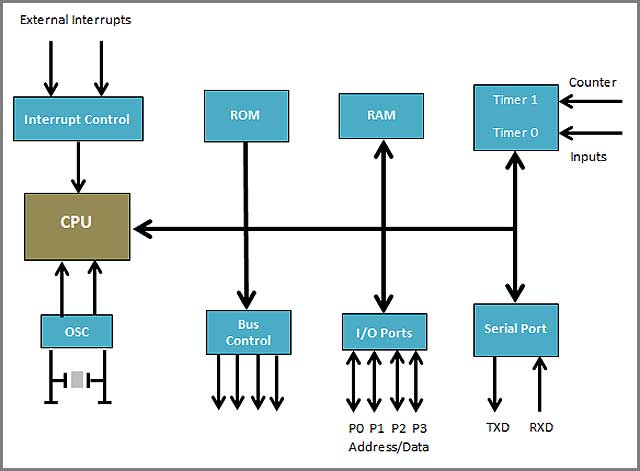 Image 5: FPGA Vs. Microcontroller
Image 5: FPGA Vs. Microcontroller
FPGAs vs Microcontroller: Choosing Between FPGAs and Microcontrollers
Application
The primary factor to consider, the better option between the two, is the intended application. Microcontrollers, for instance, are ideal for less-intensive routine or sequential processing applications like monitoring temperature changes or automating some functions in IoT projects.
Why? Because the chips have low clock speeds that deliver a fraction of the processing power provided by an FPGA’s paralleling processing speeds. On the bright side, they consume little power, making them suitable for battery-powered, off-grid projects for control systems and sensory interfaces.
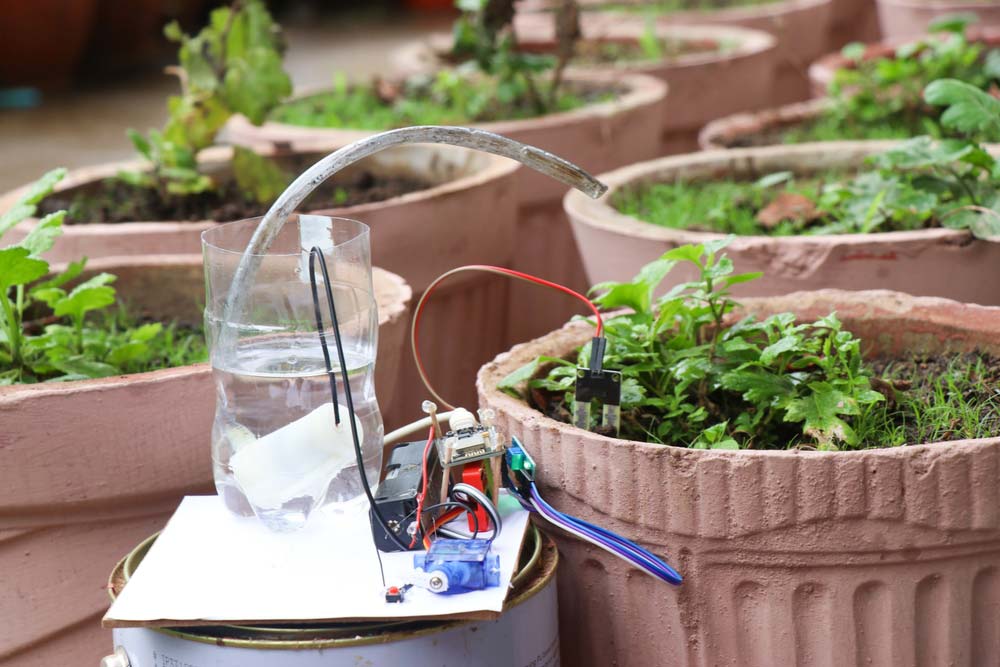
An IoT project that senses moisture levels in the soil to activate an irrigation system
They are also the best for energy harvesting applications because they will leave more power to the batteries or grid.
On the other hand, FPGAs excel in parallel processing, so you can use them to perform weighty applications like image processing or signal processing.
The downside to the fast parallel processing performance is high power consumption. FPGAs are not ideal for battery-powered projects. Well, they can work, but your battery will drain quickly.

Facial detection (image processing) using data streams from CCTV cameras
Customization
Microcontrollers don’t offer much hardware customization, but they allow you to configure the software. Therefore, if the project only requires software customization, microcontrollers will work.
However, FPGAs allow hardware customization, which means designers can customize the chip’s digital circuits to suit the project requirements.
For instance, when developing ASICs, you can use FPGAs to test the prototype circuit and adjust accordingly. This setup saves time and money because you won’t have to rebuild multiple revisions of the integrated circuit to get to the final working chip.
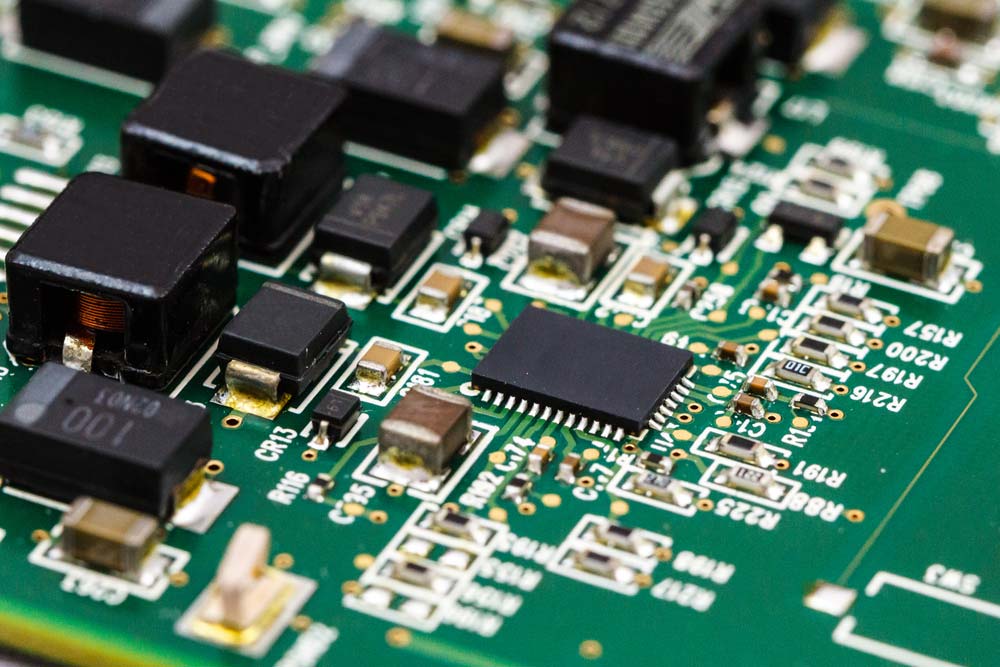
An application-specific integrated circuit mounted on a PCB
Expertise
You or your team cannot handle FPGAs if you don’t know how to code using hardware description languages like VHDL. Most developers are proficient in high-level programming languages like C and Python, which you can use to program microcontrollers.
Cost
The last significant factor is cost because your project’s budget is critical in determining its success.
FPGAs are costlier to buy than microcontrollers, but they can be cheaper in the long run if your project involves rapid hardware prototyping, such as when developing ASICs.
However, it would be best to consider other factors like the FPGA development process, which can take significantly longer. Your team’s expertise matters, as well.
If you don’t have skilled personnel, you’ll have to spend money to acquire or train some programmers/designers.
FPGA Vs Microcontroller--Conclusion
We can help to purchase integrated circuits and manufacture boards following your accurate specifications and preferences.
If you have more questions about PCB Manufacturing and Assembly, please contact us; we are always happy to help.
Special Offer: Get $100 off your order!
Email [email protected] to get started!




